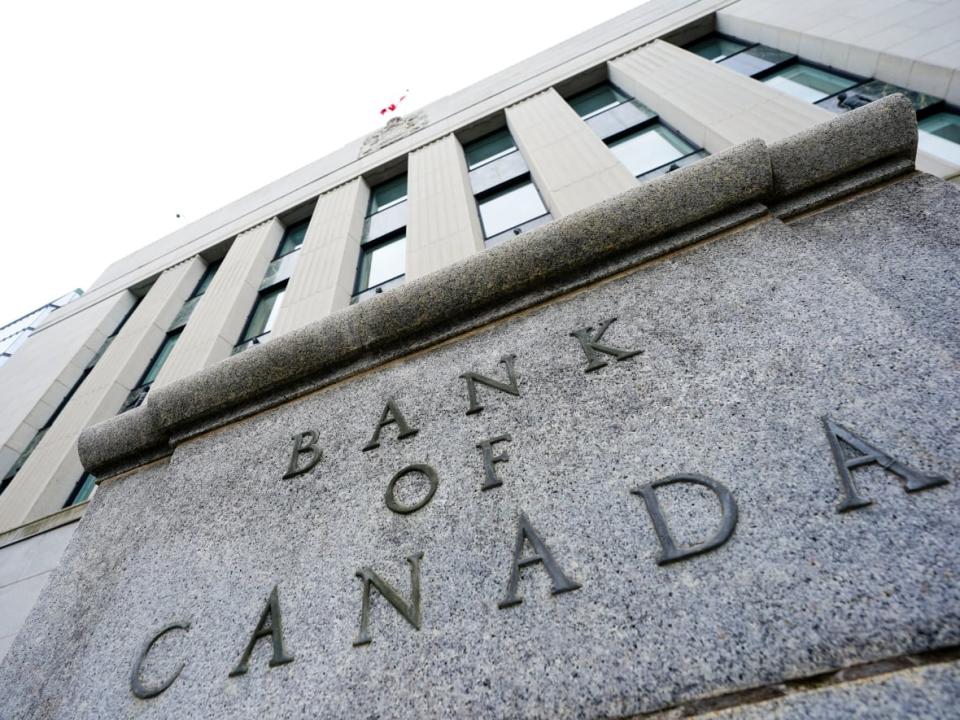High inflation top of mind at Bank of Canada decision making, deliberations summary shows

The Bank of Canada's governing council ultimately decided to hike its key interest rate last month because of ongoing strength in the economy and inflationary pressures.
In its first-ever summary of deliberations, the central bank pointed to a tight labour market, strong GDP readings and the risk of inflation getting stuck above two per cent as the rationale behind raising its key rate by a quarter of a percentage point on Jan. 25.
The summary published Wednesday outlined what the council — made up of the governor and his deputies — discussed during meetings about the rate decision.
Jay Zhao-Murray, a foreign exchange analyst with payments firm Monex Canada, gave the central bank credit for improving its transparency by publishing the summary of its deliberations, the way other countries do.
"The most impactful information for markets going forward will be the discussion of policy options, as it gives the clearest indication of where the central bank's bias lies," he said. "All in all, we give these minutes a score of 7/10 for transparency, as they are genuinely insightful but fall short of providing some information that some central banks offer."
Full impact of hikes not yet felt
The council unanimously agreed that the central bank's action to date had been aggressive and the full economic effects of rate hikes have not yet been felt.
"All governing council members acknowledged they were approaching this decision with a similar view: that the bank's monetary policy to date had been forceful and that the full impact would be felt in quarters to come," the summary said.
The central bank has hiked its key rate eight consecutive times since March 2022, bringing it from near zero to 4.5 per cent. That's the highest it's been since 2007.
Bank of Canada nudges key interest rate to 4.5%
With the first rate hike of the year, the central bank indicated that it would take a conditional pause to assess how the economy is responding to higher rates.
"Data on both the labour market and economic activity suggested that there was more excess demand in the economy in the fourth quarter of 2022 than previously forecast," the summary said.
The summary also revealed that the Bank of Canada is concerned inflation might be stickier than expected.
"Persistence in supply chain challenges, services price inflation, wage growth and inflation expectations could all keep inflation above the target," the summary said. "A rebound in oil prices could also push inflation back up again."
Headline inflation has fallen from its peak of 8.1 per cent seen in June to 6.3 per cent in December. The Bank of Canada is forecasting the annual inflation rate will fall to three per cent by mid-2023 and to its two per cent target in 2024.
According to the summary, after some deliberation on what forward guidance the central bank should give, governing council members were in broad agreement to signal a pause to convey that the bar for raising rates further is now higher.
The release of the five-page summary follows a recommendation from the International Monetary Fund to increase transparency about the rate decision process.
It also provides a glimpse into what the Bank of Canada's governing council considers when making policy decisions, something economists and forecasters often try to understand.
Elevated interest rates are expected to slow the economy significantly as people and businesses pull back on spending.
As the Bank of Canada monitors how the economy reacts to higher borrowing costs, the summary shows it is closely watching global and domestic economic developments.
The council spent a "considerable" amount of time discussing the potential effects of China lifting COVID-19 restrictions, according to the summary, with a particular concern about the effect the reopening could have on oil prices.
"If Chinese demand were to rebound by more than anticipated, oil prices could rise substantially, putting renewed upside pressure on Canadian and global inflation," the summary said.
Domestically, the governing council noted declines in consumption and housing activity indicate the economy is slowing.
However, Statistics Canada's preliminary estimate for real GDP in the fourth quarter suggests higher growth than the Bank of Canada's previous expectations.
The central bank has also said Canada's tight labour market is a sign of an overheated economy. In December, the unemployment rate was five per cent, just above the record-low of 4.9 per cent reached in the summer.
But the council is still encouraged by signs of inflation slowing.
In the summary, the council acknowledged that much of that slowdown is the result of lower gasoline prices, but members noted the decline in durable goods inflation suggests higher interest rates are working to slow demand.

 Yahoo Finance
Yahoo Finance 